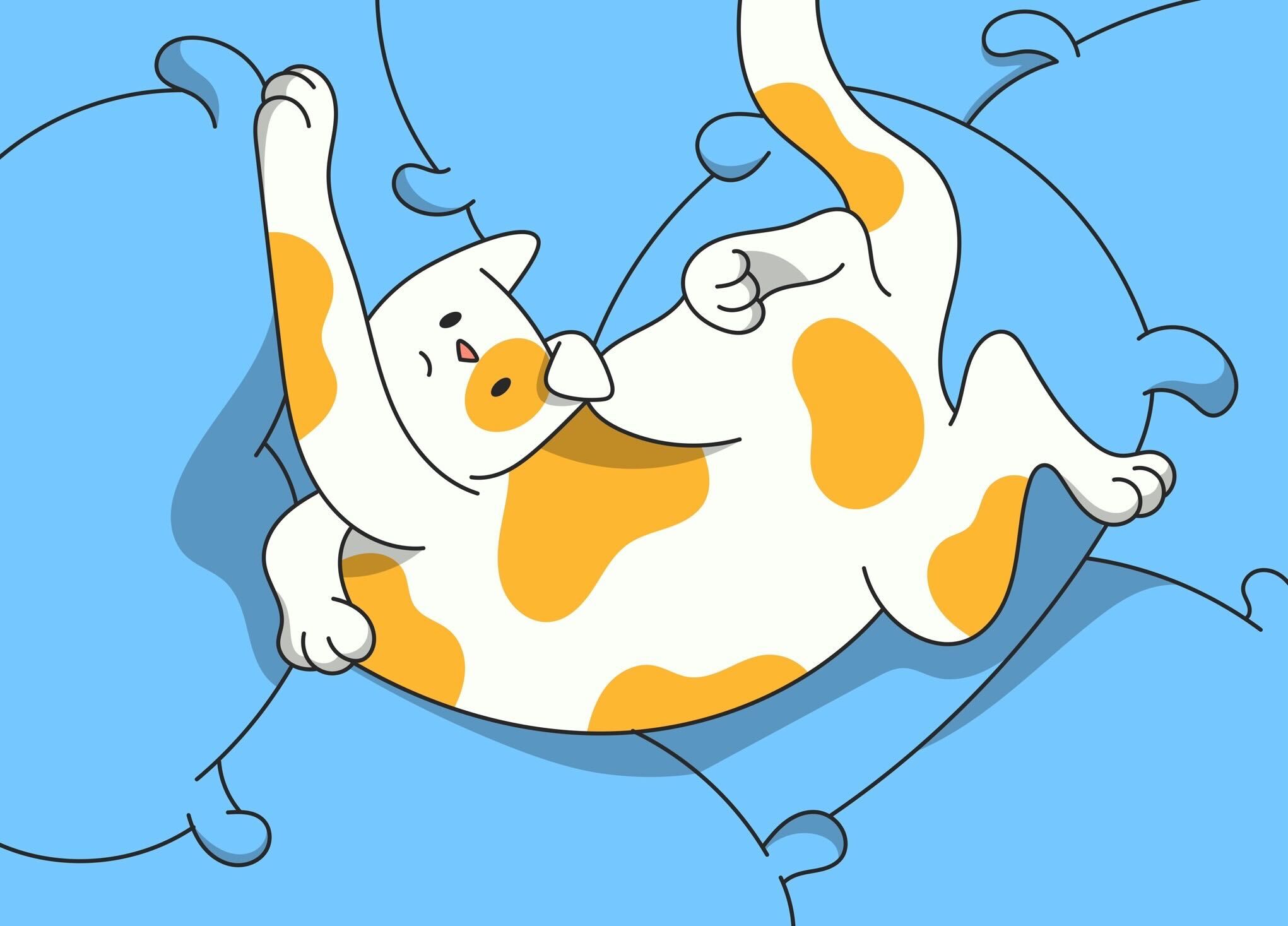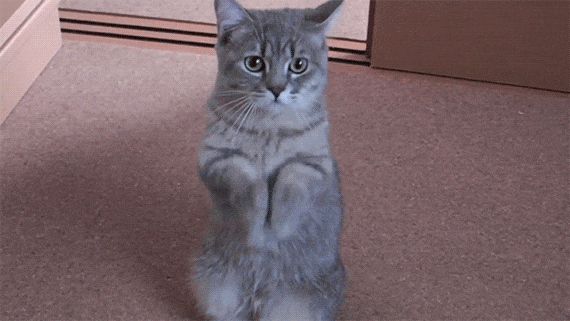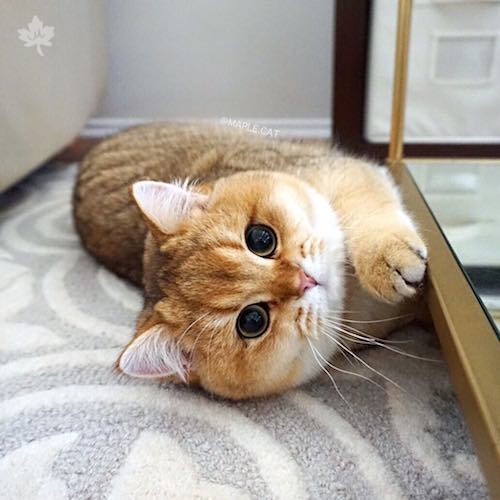Have you ever sat at home, watching your cat, and wondered, "What could they possibly be trying to tell me?", or "Why on EARTH are they doing that?!”
Sometimes, we can't always understand what our cat is up to, or why they are exhibiting a certain strange behavior, but we can have some a better idea from a combination of intuition and education.
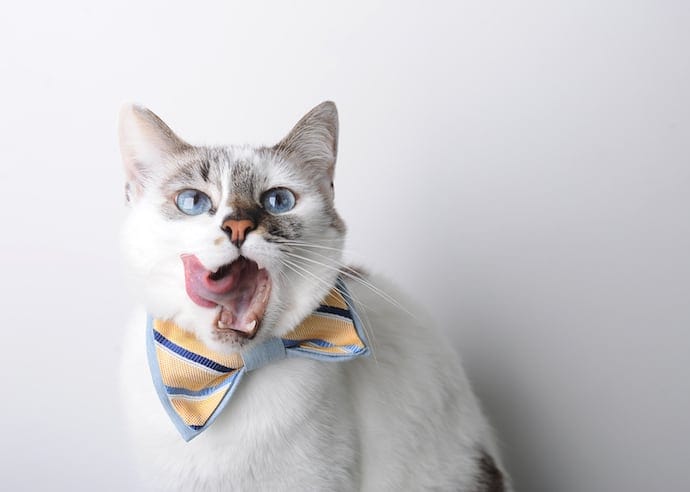
Let us explain!
Oftentimes, when your cat is doing something a little out of the ordinary, they are trying to tell you that something is not quite right - whether it is with their behavior, health, environment, or something else. We know that trying to decipher these cat behavior problems can be tricky, but we’ve got some tips and tricks for getting to the root of many common problems.
In this article, we are going to take a closer look at some bad cat behaviors and what they mean along with how you can help them if the situation presents itself again.
Common Cat Behaviors and What They Mean
Unusual or strange cat behaviors that your cat may be exhibiting when they are stressed or when something is wrong can vary depending on your pet, but often more than not, they tend to be fairly easy to spot.
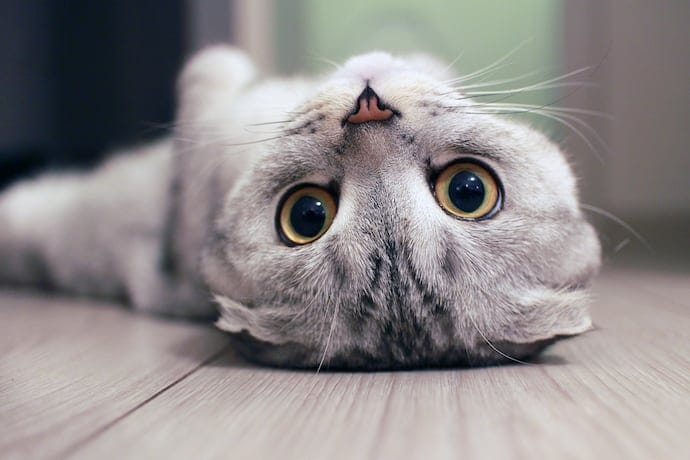
These cat habits and behaviors are key to understanding your cat and can include any of the following:
Litter Box Problems
If your cat has resorted to using the bathroom in places other than their litter box it’s important to know that they are not doing it to upset you. This feline behavior is often a sign of a behavioral or medical issue so learning how to understand your cat is important.
Anxiety is a common culprit of this behavior and it’s up to you to figure out what is stressing your cat out. Have you moved recently, had house guests, or moved the litter box to a different spot? Whatever the case may be, it could be as simple as resolving the source of the anxiety.
Medically, it could signal a vast number of problems such as diabetes, hyperthyroidism, kidney, liver, or urinary tract problem. If you’re not understanding your cat and there is no clear explanation for your cat's abnormal litter box behavior, a trip to the vet may be needed.
Estrus
Cats in heat or estrus display very clear behavioral signs that include but are not limited to rolling around, rubbing against any and everything, restlessness, excessive vocalization, and demandingly affectionate. It can be an extremely tiring and uncomfortable time for your female cat but there are steps you can take to help keep her calm and collected.
One method you can try is offering her a warm towel to sit or lay on. This will help relax and soothe her anxiety. Distraction can also be helpful so playing with your cat or giving her a new toy could give her some relief. You can also try products such as Feliway or lavender oil which has a calming effect and can offer your cat some much-needed rest and relaxation.
If estrus in hard on your cat, having her spayed is the best option. Not only will it keep your cat be more comfortable but it will also extend her natural lifespan.
Spraying/Marking Territory
This is often an instinctive urge that many pets have from their non-domesticated side. Our pets, especially cats, mark territory to stake their claim on their home and their family. While we often think of marking territory as urinating, marking territory can also come in the form of rubbing their fur against your leg or a piece of furniture or even scratching.
Scratching
When it comes to scratching, there can be many underlying reasons, and not because they are trying to get themselves into trouble! Cats often scratch furniture and other things for several reasons, including to groom their claws, as well as to mark their territory.
Itching
However, when we look at itching, it is typically an abnormal feline behavior that needs attention. Itching involves obsessively licking or scratching at their own fur, which can be caused by skin irritation, parasites, or other health conditions.
Biting
Biting is obviously a more serious feline behavior. Biting can be a dangerous matter and is often caused by the animal feeling a need to prove dominance, or even feeling defensive of its territory. In any case, if the biting becomes increasingly worse, it may be a good idea to take your cat to a professional trainer for advice on how to deal with the situation.
Water Intake
Have you noticed your cat drinking more water than usual? If so, it may not be a cause for concern. Many cats simply enjoy drinking water or like many pets, they eat or drink mainly when you are around so it’s more noticeable. They type of food you feed your cat could also be the answer since cats that eat dry food often drink more water to make up for the lack of hydration within dry cat food.
If you’re still concerned, however, trust your instincts. You know your cat better than anyone so if the drinking is definitely excessive, make an appointment at your vet as it may be a symptom of kidney disease, diabetes, or hyperthyroidism (among other medical conditions).
Excessive Peeing
Is your cat peeing normal amounts frequently or small amounts frequently? That is the question! We know it may not seem like a big deal as to the amount your cat is peeing but it really is- it could help determine why your cat is peeing so much.
Increased urination of normal amounts typically points to a urinary issue such as inflammation or a blockage while oliguria or excessive peeing in small amounts could indicate an obstruction such as bladder stones or an infection. In any case, if age, medication, or hormones is not a factor, it should be considered an emergency situation.
Hiding
Whether we want to believe it or not, our pets can also feel stressed or anxiety from time to time. In cats, it may cause them to hide more frequently than normal.
True, it may be normal for your cat to hide and have some time to itself throughout the day, but if you notice that your cat is simply not coming out from their place under the bed or other hiding areas, it may be a cause for concern. Evaluate recent lifestyle changes that may be contributing to your cat’s behavior.
Begging
Most of the time, begging isn’t a cause for concern. Begging usually comes with the territory and they can be quite relentless! If you set boundaries, stick to a feeding schedule, and ignore the begging (even negative attention can reinforce your cat’s behavior...also, don’t give in!), you can successfully reduce or even stop the begging. It’s hard to believe but it’s possible!
You should note, however, if the begging has reached a concerning level. While an increased appetite is common in older cats, households with multiple cats, and active cats, it could also be a symptom of a medical issue. Take a trip to the vet to rule out problems like parasites, diabetes, or cancer.
Choking
We have good news and bad news regarding choking in cats. The good news is that it’s actually pretty rare for cats to choke. The bad news is that if your cat is truly choking, there isn’t a lot you can do besides getting her to the vet as quickly as possible.
In the circumstance that your cat becomes unconscious, you may be able to open the mouth to see if you can locate the source of the blockage. Items such as food, toys, string, and of course, hairballs could all cause your cat to choke. If the culprit is a string, we recommend going to the vet and not attempting to pull it out as you could cause severe damage.
Hissing
Cat owners are definitely no strangers to hissing, and if your cat is hissing at you, it is time to back off. Hissing is a good indicator of impending aggression to follow, but it also signifies that the cat is feeling bothered or even frightened. If you notice your cat is hissing and being more aggressive than normal, there may be something that is affecting their daily routine or environment that is making them feel defensive or frightened and may need to be looked into as well.
Over Grooming
Over grooming can come in many forms and severities, and can also be caused by a bevy of factors as well. In some cases, over grooming is a behavioral issue, also known as psychogenic alopecia. This basically means that over grooming is a stress reliever for your cat, and if not treated and stopped can lead to severe hair loss and other irritation to their skin.
On the other hand, over grooming can also be a sign of a medical problem that is on the rise. Either way, it is best to schedule an appointment with your vet if you notice over grooming becoming more of an issue for your feline.
Rolling/Kneading
Sometimes, the behaviors that your cats are exhibiting are simply because they want some love and attention! This is the case for rolling onto their back or rolling over at your feet. Your cat is simply trying to tell you that they want your attention after a long day and that they need to be petted, cuddled, or simply talked to.
Kneading can also fit the bill but in some circumstances; the kneading behavior is also instinctual. Kittens all the way through to adult cats will knead their paws throughout their lifetime, and it starts at the very beginning when they are nursing. It can also be contributed to their need to mark territory, as the pads on their paws have scent glands in them as well.
Chewing
Chewing is a tricky cat behavior to deal with, and can also cause a heap of problems for you and your family when it becomes destructive. Chewing is often a cat habit that can be linked with boredom. Felines are highly intelligent creatures, and often need stimulation throughout their day. To keep them from chewing on items that aren't theirs, make sure to get them interactive and stimulating toys and things to chew on that will keep them busy when everyone is out.
Depression
This is definitely a stranger cat behavior, especially since it can also include other behaviors that we have already talked about on this list. Cats can exhibit signs of depression, but it is not the same type of emotional symptoms that we see with humans.
If your cat is feeling depressed, they will often show symptoms like loss of appetite, avoiding or hiding a lot, more lethargic than normal, and other abnormal behaviors, such as hissing more than usual.
Cat Body Language And Vocalization
Among the cat behavior problems that we’ve talked about here already, one of the most prevalent that you will notice as a cat owner is a vocalization. It is so important to listen to your cat when they are trying to talk to you, as there can be critical differentiations to the sounds.
Learning how to understand your cat is vital for all cat owners, and some cat sounds that they use for interaction can include the following:
Meowing
Well, obviously, all cats meow! The key is knowing that the reason behind the meows often changes as they continue to age. As your cat gets older, meowing is simply an outlet for communication. They use it to tell us what is needed, or that they are wanting attention.
The problem is when the meowing seems to become more excessive than normal, it can be caused by a multitude of things. This can include illness, stress, or other issues as well. You may want to schedule an appointment with your vet to rule out any dangerous illnesses or problems that could be on the horizon.
Howling
Excessive howling can often be a good indicator that something is not right in the health department. This can often be considered a cry of pain (we will discuss crying further in this section), and it is important to schedule an appointment with the vet right away to find the source of the pain and trouble before it gets problematic.
Yowling
Yowling is a meow that is often more drawn out and loud. Yowling is more prevalent in adult cats and can be heard more often during breeding. It is often not something to be alarmed about, but if it becomes excessive, it’s worth having your furbaby checked out.
Crying
As we mentioned before, a cry or a howl can be signs of distress. This could be from something painful, illness, or getting caught in an unfortunate predicament. If you notice that the crying seems more pain induced, contact your vet immediately!
Hissing
Hissing is a sign of aggression, or rather aggression that is about to bubble to the surface (yikes!). Your cat will often hiss when they feel:
- Defensive
- Stressed
- Anxious
- Frightened
It can also be a sign that something is wrong behaviorally, such as depression (as we discussed). It is important to get a second opinion from a vet or other professional to find out why the excessive hissing may be occurring.
Whining
We would classify whining as a similar sound and vocalization to crying, but not as extreme in some cases. Whining can happen to draw attention to anything, whether it be the need for water, food, love, or that they just aren't quite feeling right that day, either behaviorally or physically.
It can also be coupled with various forms of body language as well. This can range from rolling on their back, showing different facial expressions, crouching, and just seeming more tense or aggressive. If you see body language that doesn't appear normal for the personality of your cat, including the behaviors that we have already listed here, get them checked out.
Kitten Behavior
It is important to note that with all of these cat behavior problems and vocalizations, we are talking about adult cats! Kittens are far more different when it comes to their needs and wants, as they are younger and sometimes just trying to stand on their four feet. That said, when your kitten is exhibiting nonstop vocalizations, it is often because they need to nurse, want to be with their mother, want attention, or have gotten themselves stuck in a sticky situation.
Kittens understandably show a lot more interest and curiosity in their surroundings, and the best indicator in finding out how they are feeling is through two things - their tail and their ears. Perked up ears show that they are ready to explore and are intrigued by something in their environment. On the other hand, a kitten's tail (like adult cats) can tell you how they are feeling whether it is aggressive, intrigued, or frightened.
Monitor Your Cat’s Behavior
Now that you know what cat behavior signs and sounds to look for, the next step is being able to observe worrisome behaviors consistently. Between work, the gym, and running errands, it can prove harder than at first thought. If only we could clone ourselves! While that certainly isn’t going to happen soon, there is the next best thing - a pet camera. There are many reasons why they are so beneficial for pet owners, but being able to know that your pet is healthy and happy is one of the best.
Petcube Play is an invaluable tool for monitoring your cat’s behavior and it’s easy to use. The camera is connected through an app with your phone allowing you to monitor, talk to, and interact with your dog or cat through 2-way audio and a 1080p HD video camera. How’s that for being in two places at once!
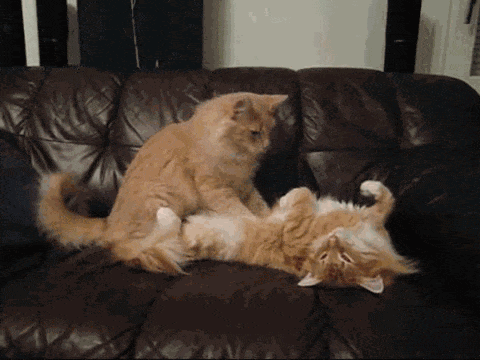
Honestly, the important thing to remember with your cat is that communication is at the center of their personality. Every single thing they do can be a channel for communication with their owners, their families, and other animals. Whether this is through marking their territory with their fur and scent, vocalizing their opinions, or simply a twitch of their tail, they are letting us know what is going on and what they need. Your cat is in constant communication with you.
About the Author: Nadine Rich is a business owner of a pet spa for over 12 years now and founder of Models Supporting Animals.
Was this article helpful?
Help us make our articles even better

